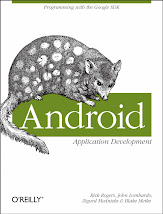What is a smartphone?
Frequently, the question comes up “What is a smartphone?” Usually, this question is mixed up with other questions like “What makes a good phone UI?” and “Why don't all phones use a smartphone OS like Windows Mobile?”
The confusion comes from the fact there are “good” or “nice” UIs that can be classified as smartphones, like iPhone, and clumsier UIs that are clearly in the smartphone category, but that are hung up on a design legacy that prevents them being competitive with products like iPhone. Are they all smartphones? Do we need more categories? What about the Linux-based 3G phones in Japan? What about Android?
The PDA design legacy
The idea that handheld devices need an operating system emerged long before mobile handsets became the dominant handheld device. It emerged before one could expect all devices to include a wireless network. It emerged before Web browsing and Web applications became central to handheld device use cases. It emerged before we had a choice between a circuit switched voice network and packet switched data networks. It emerged before the disaggregation of communications services and network access.
Handheld device operating systems originated with PDAs. There are several problems that arise from this design legacy: PDAs started out as non-network-connected “sideloading” sync-oriented devices for carrying your contact list and schedule around with you. Was that even a good idea to begin with? Evidence is, no: The worldwide market for PDAs is less than one tenth of one percent of the mobile handset market. But, like some string of selfish DNA with a will to survive, PDA operating systems began to infect mobile phones.
An awkward relationship
This was never a satisfactory combination: PDA phones were heavy, expensive and sucked batteries. Some PDA users were happy with the ability to keep a large contact list and a synchronized schedule with them, but folding up Microsoft Outlook and putting it in your pocket is not a goal for most people.
The smartphone has had a long, slow growth trend in the market. Only three smartphone OS suppliers remain, one of which is on life-support, one of which can afford products that don't turn a profit for many years, and one which has as their almost-sole customer the largest handset maker in the business
The new need for a better phone OS
We are now long-separated from PDA use cases as key drivers of handheld device UI design. Multimedia, the Web, and a diverse combination of IP and mobile communication on multiple networks, using multiple services now drives the requirements for handset user interfaces. This is why old school smartphone OSs are facing new competition: It was easier for Google to make Android than it would have been to turn Palm OS, or Symbian and UIQ, into a platform that meets Google's requirements for a mobile device OS.
The new requirements:
- An OS that is non-exclusive, cheap to license, and adaptable on my schedule, not the OS vendor's.
- An OS that brings the Web front and center in the user experience. The “mobile Web” is a crock. Everyone wants the real Web.
- An OS that is undemanding of the user: Direct manipulation, touch connected to action, no multi-step operations, no “dialog boxes” - communication is not like filling out forms. In other words, it can't be harder to use than a non-smartphone, and it can't be less intuitive than a media player's UI.
- An OS that accommodates new forms of communication while retaining the simplicity of the mobile phone. Access to all of our modes of communication, all of our networks, and all of our services are converging into one device. The next phone UI should not make this a burden on the user, but a benefit to the user.
- An OS that makes presence central to the user experience. The “start page” of your phone should tell you about your contacts' availability.
- An OS that makes non-verbal communication a first-class citizen in the user experience. All forms of messaging should be treated uniformly, and a single interface should organize all messages.
It is also worth noting that no mobile device meets all these requirements, especially not the communications-oriented requirements. The PDA heritage is being discarded, but what will take it's place? This is, as yet, unclear.
The new wave of smart device operating systems
Symbian (plus UIQ or S60), Palm, and Windows Mobile are the old-timers of mobile device operating systems, and the reason they are under attack from a new wave is that they cannot shake off their PDA heritage. Nokia is making the best of it by putting Symbian on some very capable hardware. But if you want to know why Nokia's amazing phones are not challenging the iPod, Symbian and S60 are the prime suspects. You simply can't build a user experience that is competitive with iPod using a platform born from a PDA (Yo mama!).
So what do we call the new arrivals? Android, the newest arrival, puts the question into focus. Android does away with most of the clutter of the PDA-style interface in favor of a friendly application “dock.” Sure, you could build a busy, multi-tab, form-filling-centric application in Android, but that's not what Google has done. Android's map application is full-screen, clutter-free, and all about direct manipulation. So is Android a “smartphone?”
I, for one, welcome our new Android overlords
I would venture to say that Android's creators hope it isn't thought of by end-users as a smartphone OS, even though it is targeted to the same big-screen hardware platforms as Windows Mobile. Android is for everyone who wants to surf and search on the go, not type-A email addicts who need to check their to-do list every time they glance at their phone. If you have the goal of building a better communications tool for everyone, don't look in a businessman's hip-pouch. You won't find it there any more than you would find inspiration for any consumer mass-market product there.




